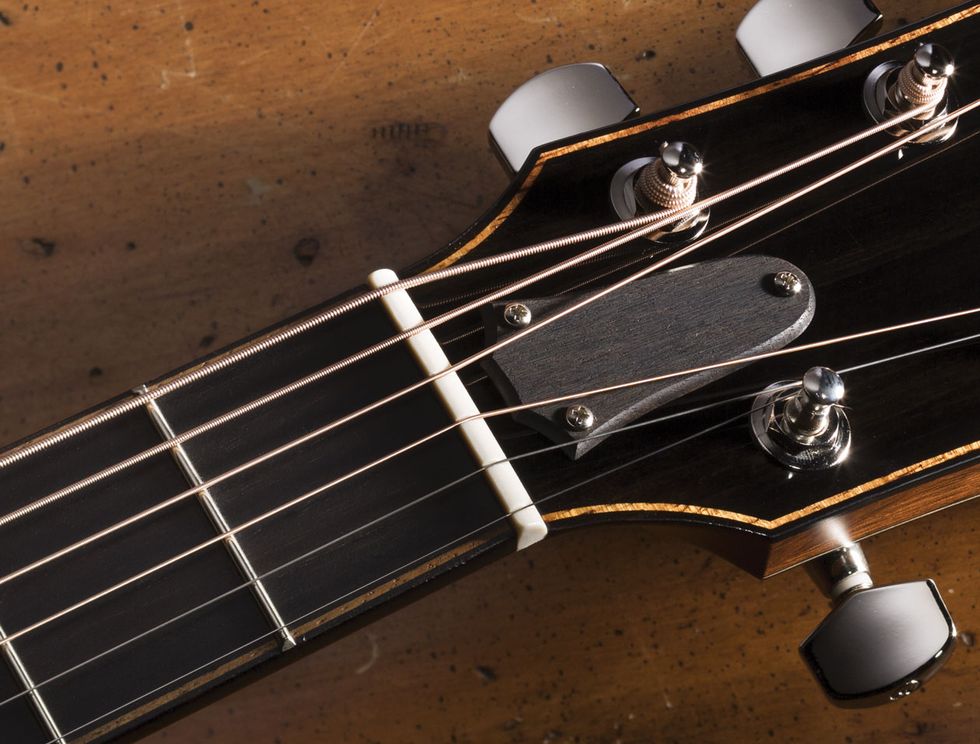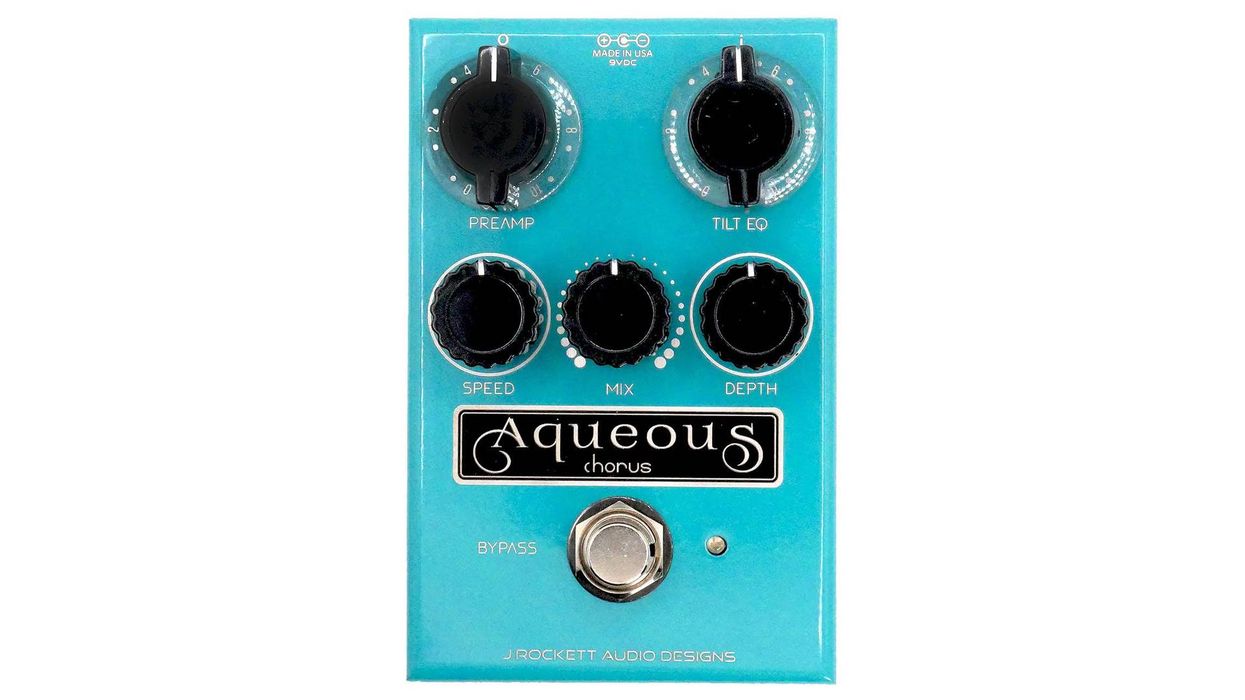When we scan a guitar review or pick up a new guitar in a store, we tend to notice its marquee features first: body size, woods, aesthetic elements, or maybe the scale length. Rarely do we pay much attention to the little stick of material we call the nut, beyond its width spec. But the truth is that this small component can make or break a guitar’s feel and function.
The nut has two basic jobs. It acts as one bookend of the strings’ active vibrating length (with the other bookend being the saddle). It also establishes the spacing between the strings by holding them in a fixed location so we can strum, pick, fret, and bend notes however we please. For everything to function well, some complicated geometry is needed.
In order to perform as a string’s end stop, the contact between the nut and the string needs to be a clear and definitive point that is always in contact with the string. This is usually accomplished by sloping the surface the string rests upon back and away from the front edge of the nut, effectively forming a knife-like edge that crisply contacts the string. As soon as the string is picked, it will want to vibrate and move all around, including up and away from this contact point. But if this happens, the vibration will no longer function as a musical note.
To prevent this, guitar makers use the strings’ own tension to provide some downward pressure against the nut by angling the headstock and string-attachment point backward from the plane of the strings, or by means of little mechanical hold-downs that are most widely seen on Fender-style necks. Both approaches have the effect of bending the strings over the nut and forcing them to rest solidly against their stopping point. The more acute this bend becomes, the more firmly the strings will lean against the nut surface.
As a string spacer, the nut’s role seems straightforward, since it simply needs to hold the strings an even distance apart. It’s not that simple, however. Since the string with the lowest pitch has a physically larger diameter than the string with the highest, the string positions are typically graduated to match the graduated sizes of the strings, which results in a uniform amount of clearance between the strings. Simply locating each string by evenly spaced center points would result in less finger space between the lower (larger) strings and more clearance between the high strings, and thereby impart an odd feel to the neck.
and playing style.
Another function of the nut is to establish the location of the string spread across the width of the fretboard. Therein lies a common misconception about a nut or neck width. While this measurement of a neck’s width at the nut will indicate how wide the fretboard surface is, there can be a significant difference in what this feels like from guitar to guitar due to how closely clustered or far apart the strings are arranged.
For example, the two outermost strings could be positioned very close to the edges of the fretboard, with the middle four strings broadly spaced in between and providing lots of finger room between the strings. Conversely, on another neck with the same width, the two outer strings could be spaced farther in from the fretboard edges to prevent pulling the strings off the neck when fretting notes accidentally, yet result in strings so close together that a player won’t be able to fret one string without accidentally touching the adjacent string.
There’s another factor to consider. While performing as both a string spacer and stopping point for string vibration, the nut is continuously being worn away. The winding of the lower strings—and even the microscopically abrasive surface of what appears to be smooth, plain strings—act like the teeth of a file under pressure by effectively sawing at the surfaces of each string’s slot. This slowly erodes them until the clearance between the strings and frets is gone, causing an audible buzz. In reality, a worn or imperfectly cut nut will cause problems well before the strings are rattling against the first fret. Overly wide or skinny string slots, or those without the precise back angle for a particular guitar, will result in tuning difficulty, dull or rattling open notes, difficulty in bending strings, and strange rattles between the nut and a player’s fretting hand, among other undesirable problems. Sometimes, a worn or imperfectly fit nut will simply make a neck feel wrong due to a poor string-spread for a particular fretboard width and playing style.
Fortunately, the nut is an easy part to replace as it wears. While many of us have seen a nut shimmed up or filled in to compensate for wear, the best approach is to start with a fresh piece of material, fit it carefully to the neck, and establish the perfect string geometry for both the guitar and your playing style.
It really is amazing how big a job that little piece does.














![Rig Rundown: Russian Circles’ Mike Sullivan [2025]](https://www.premierguitar.com/media-library/youtube.jpg?id=62303631&width=1245&height=700&quality=70&coordinates=0%2C0%2C0%2C0)




